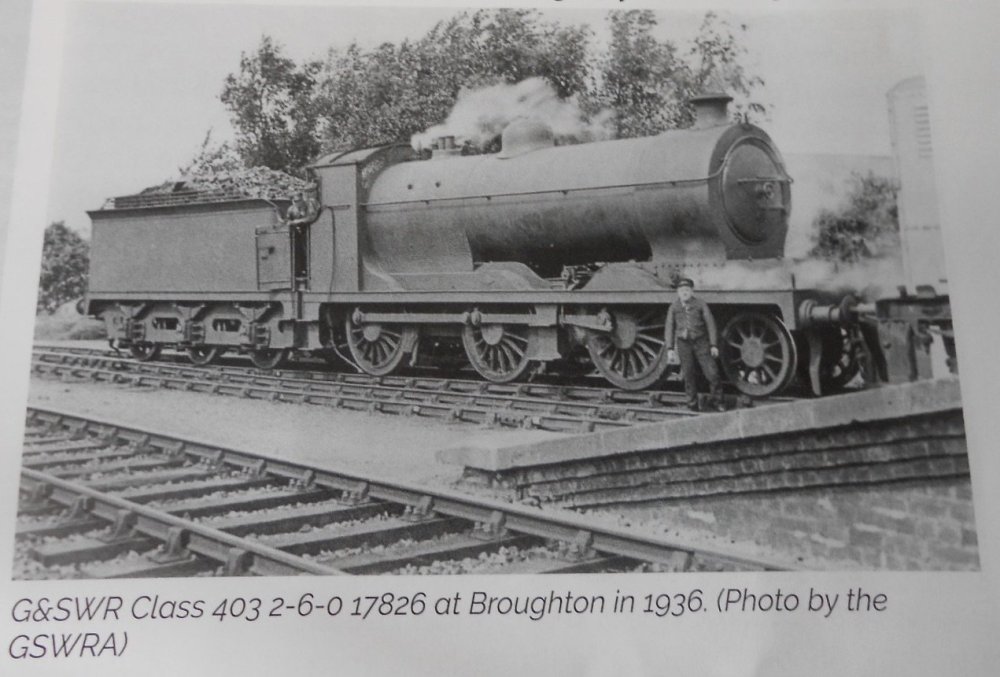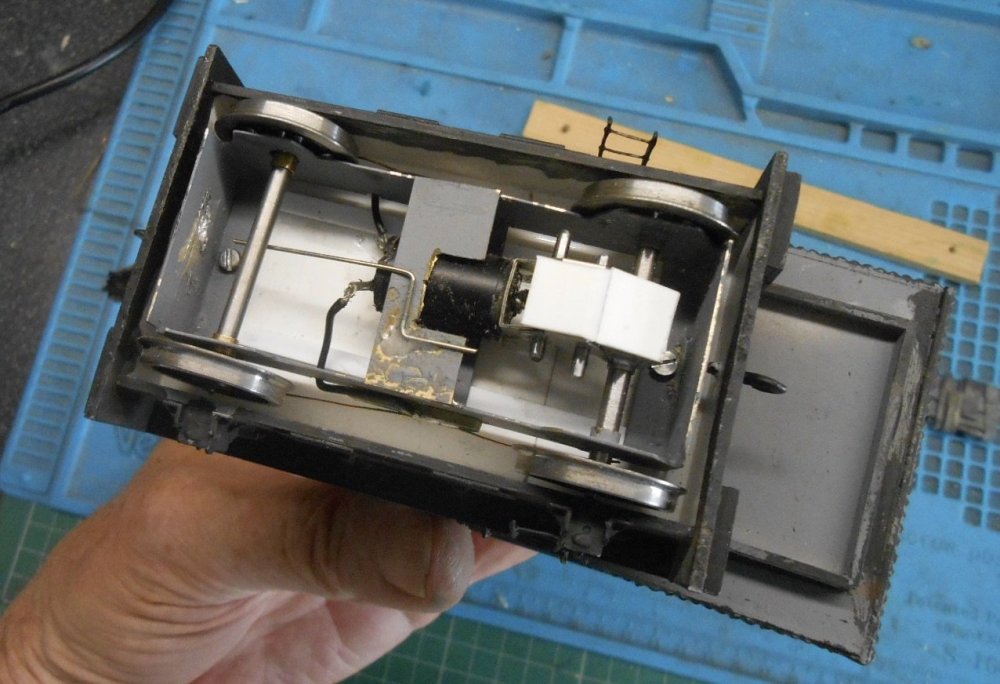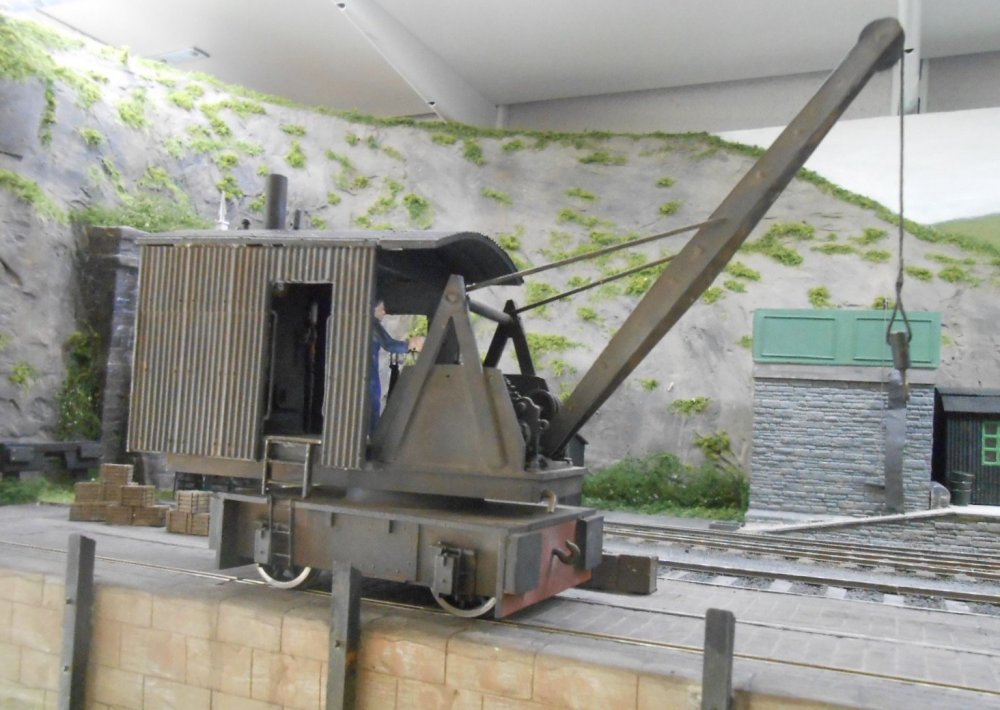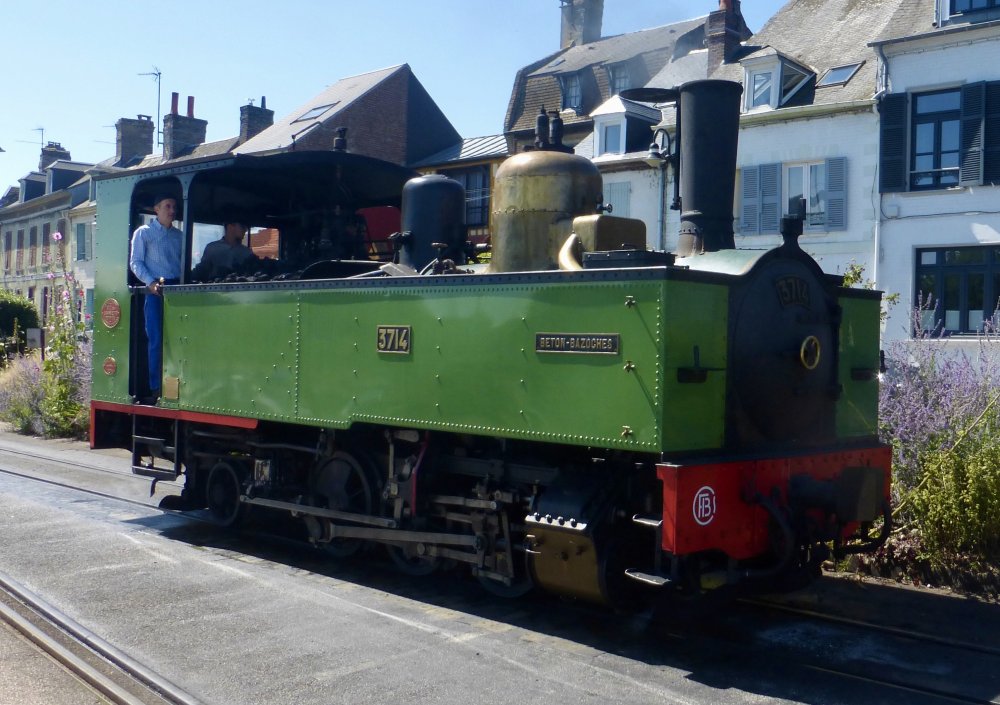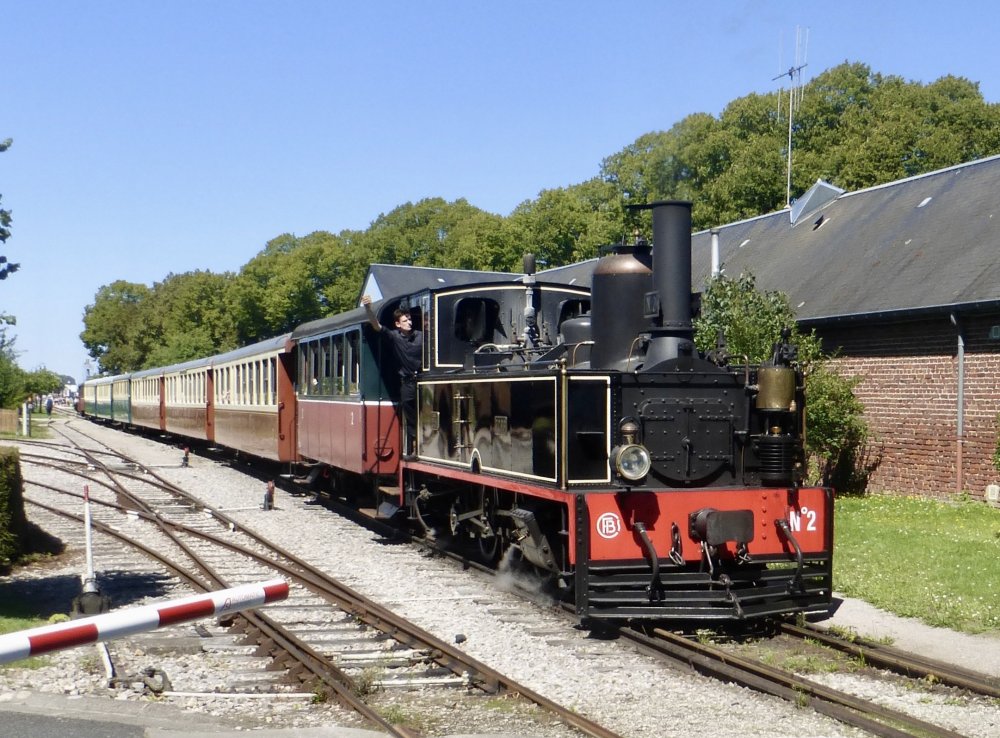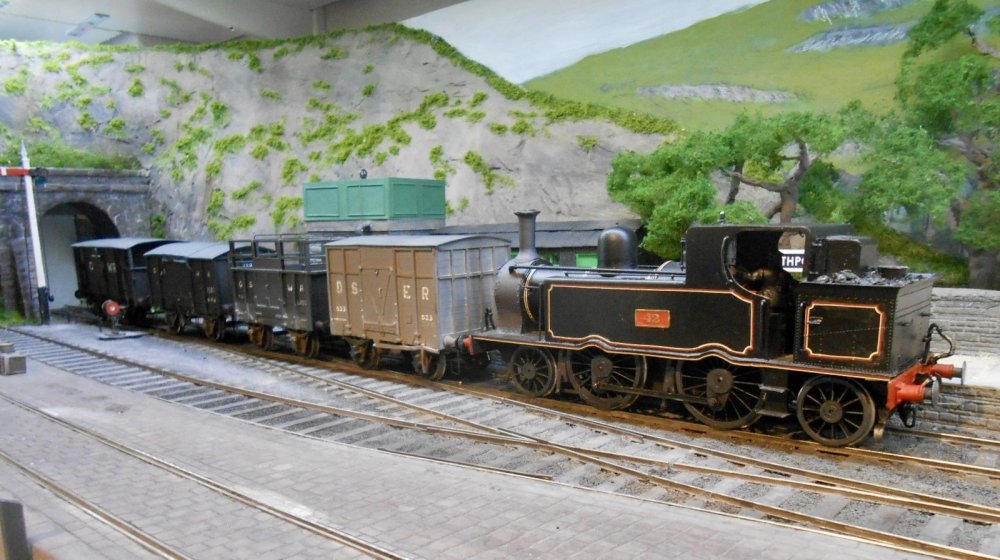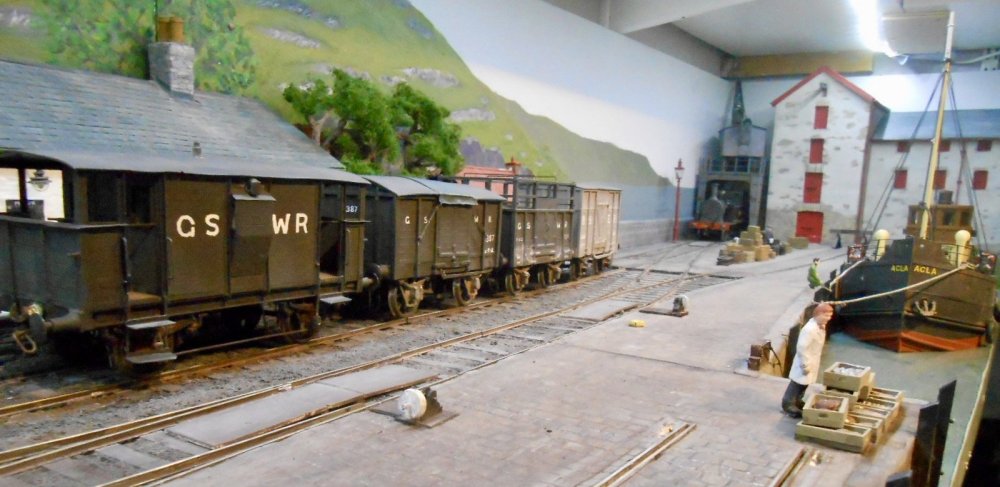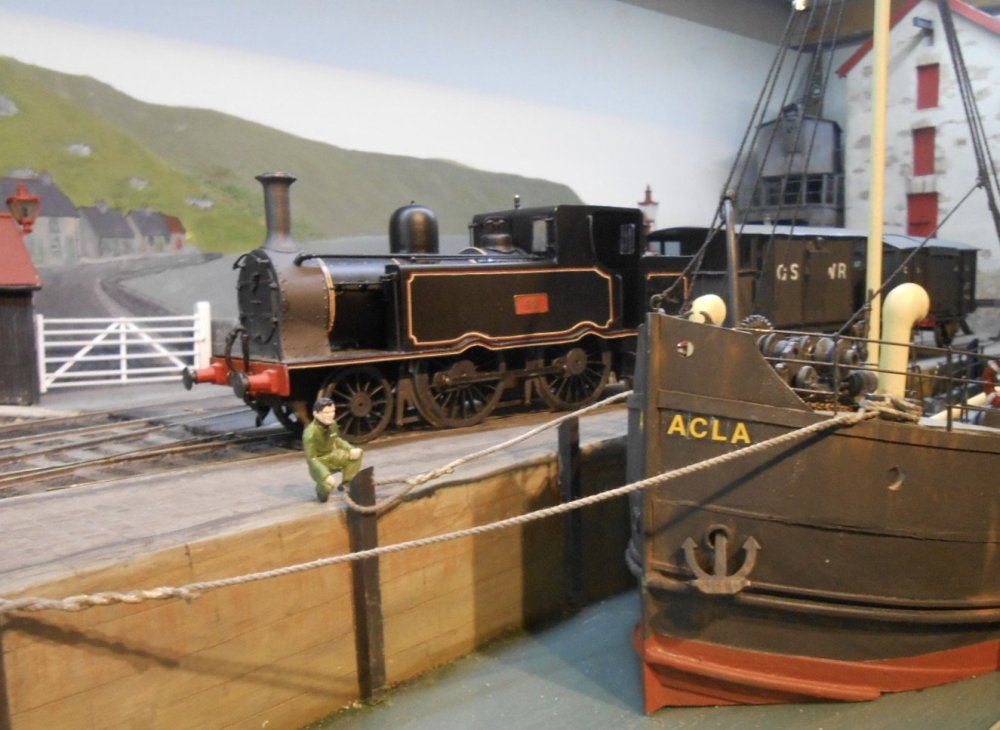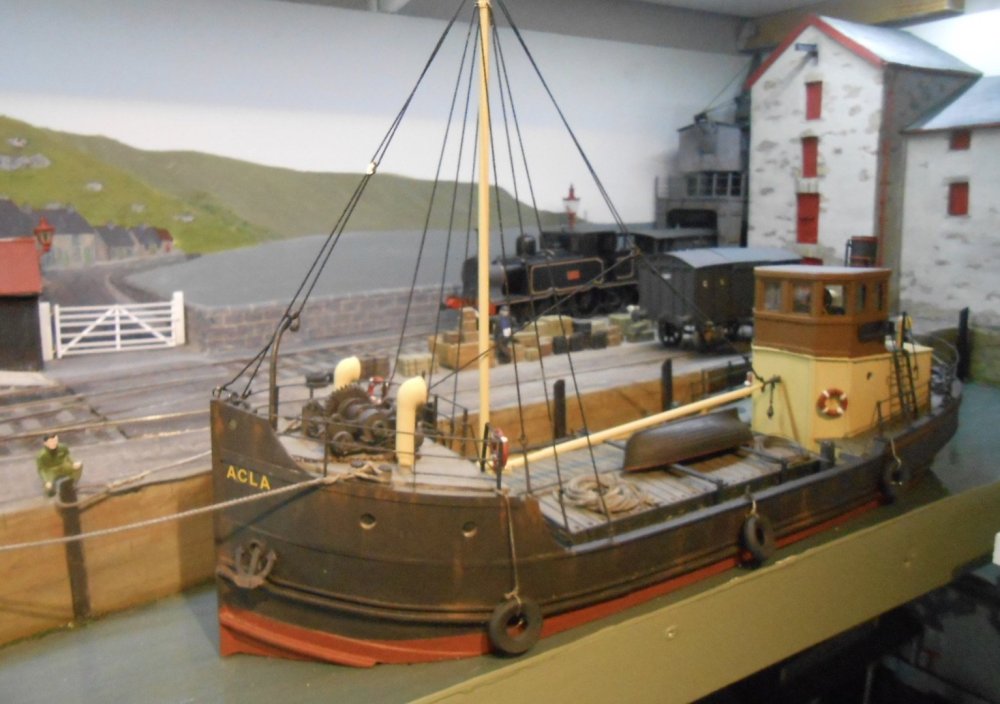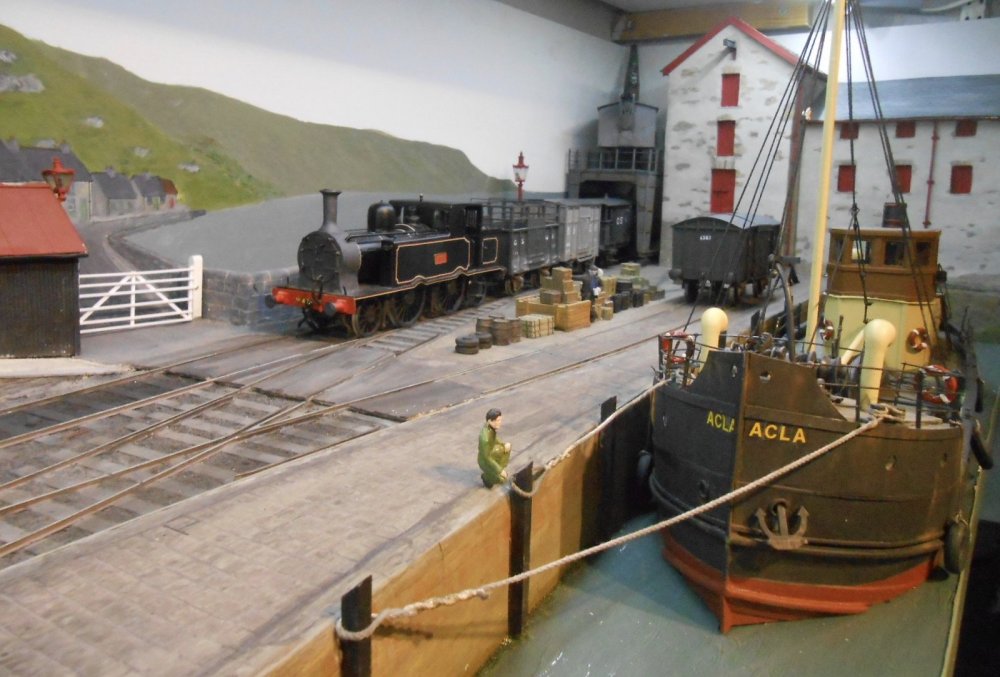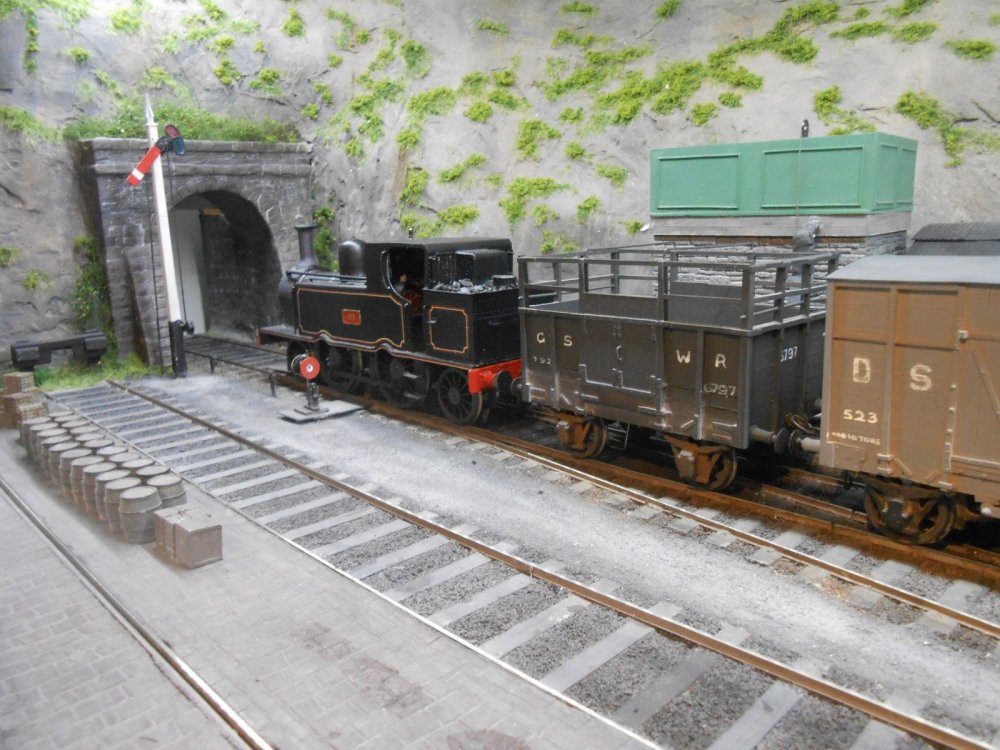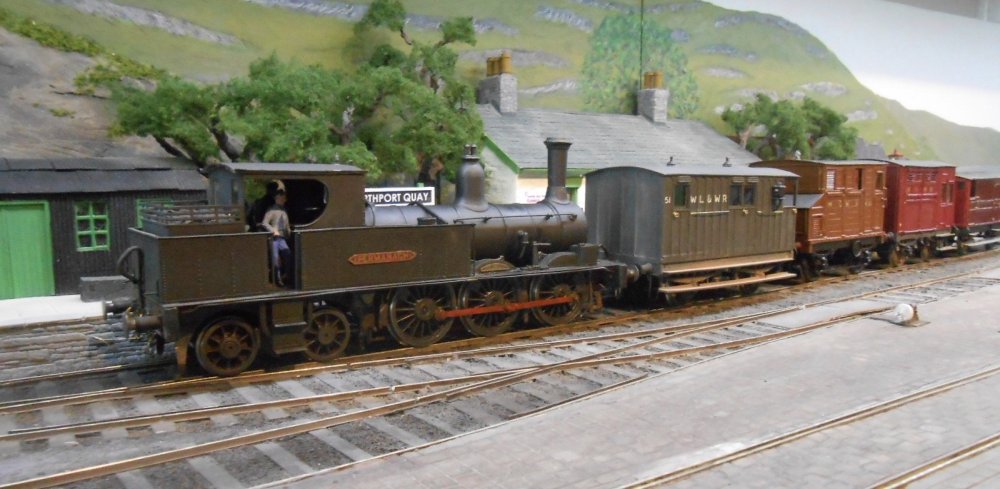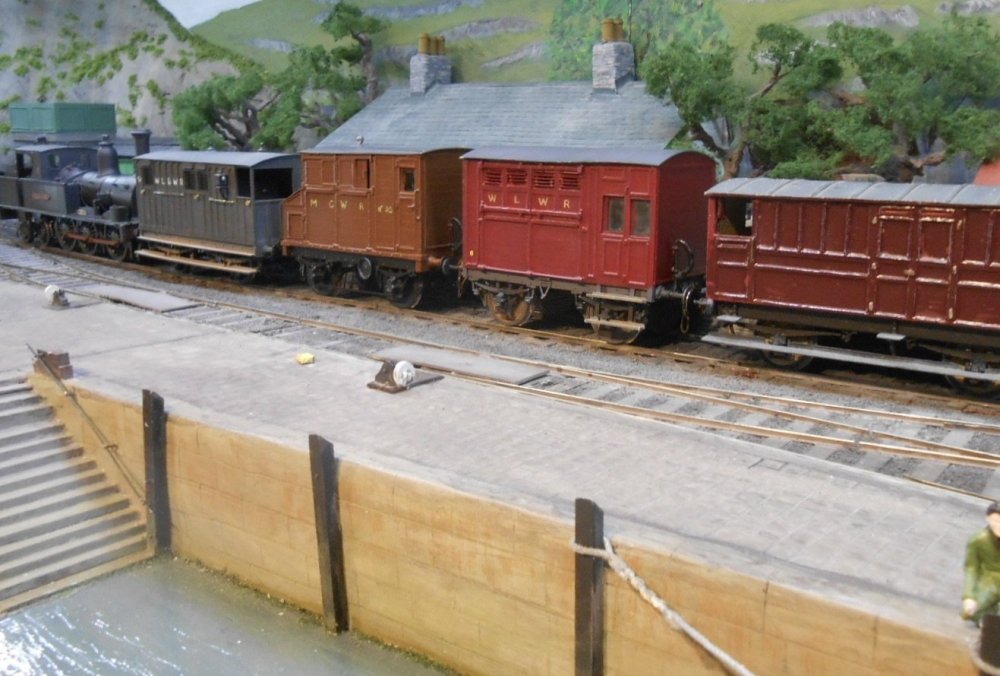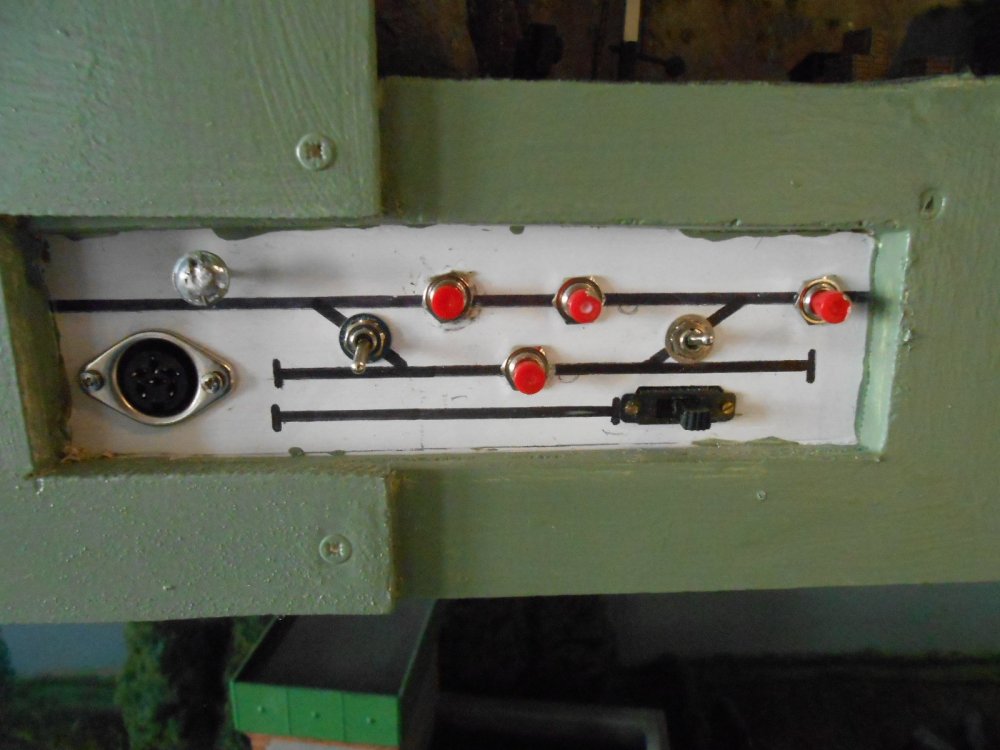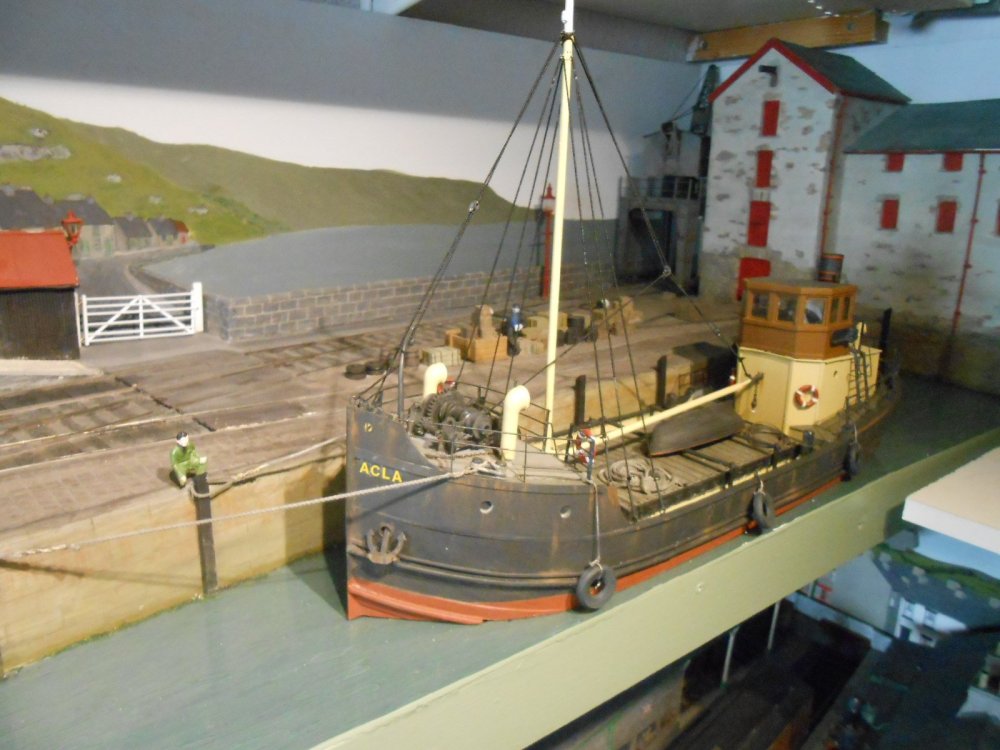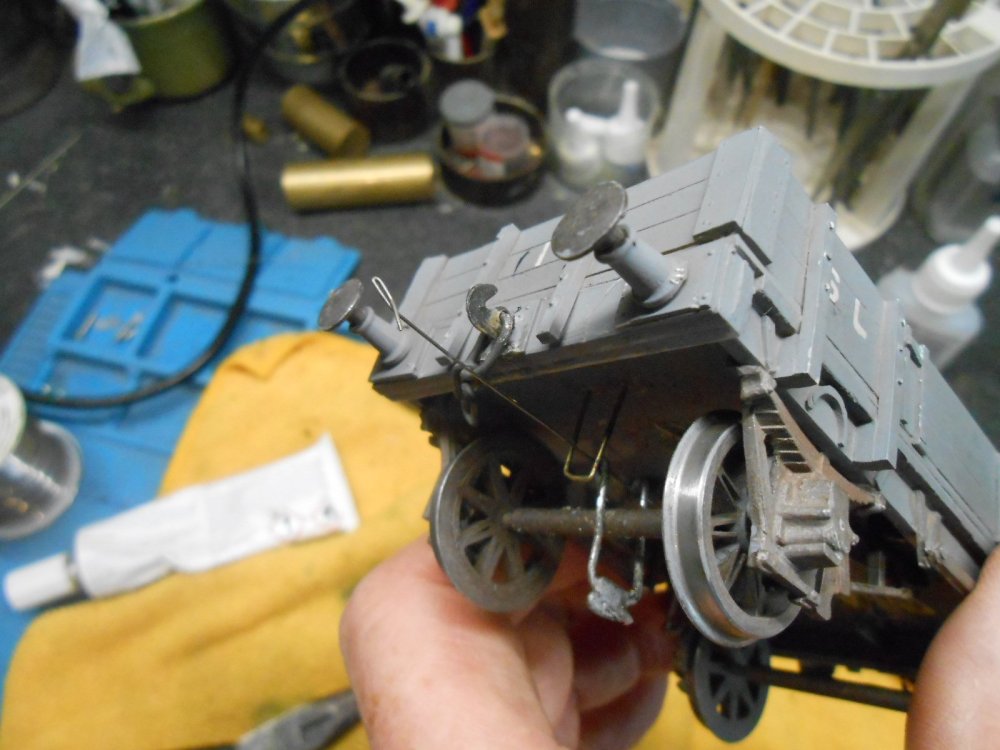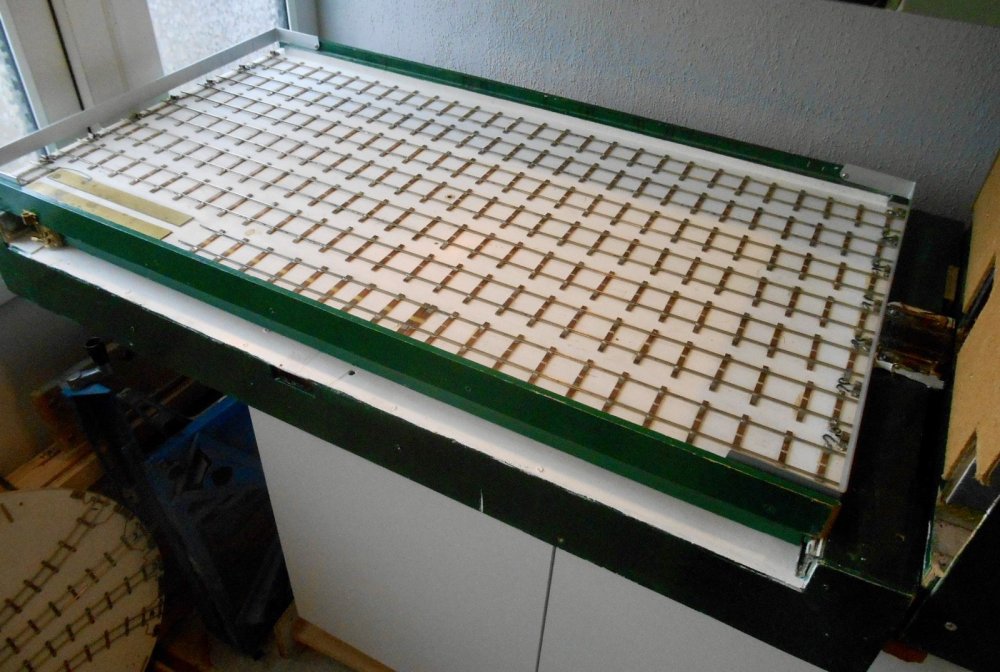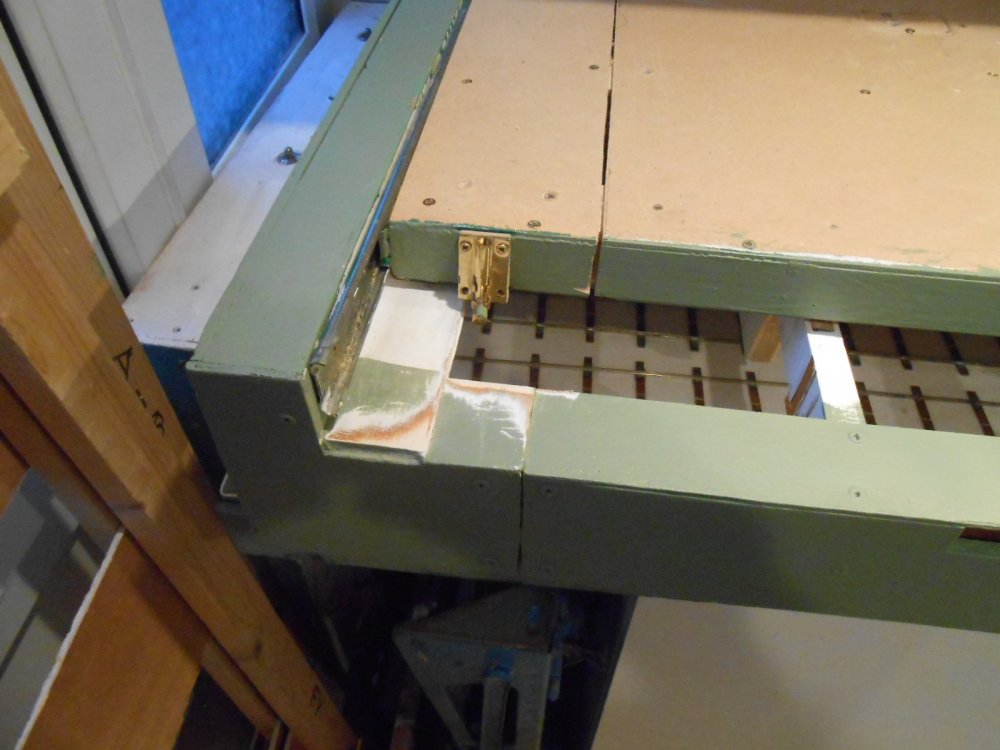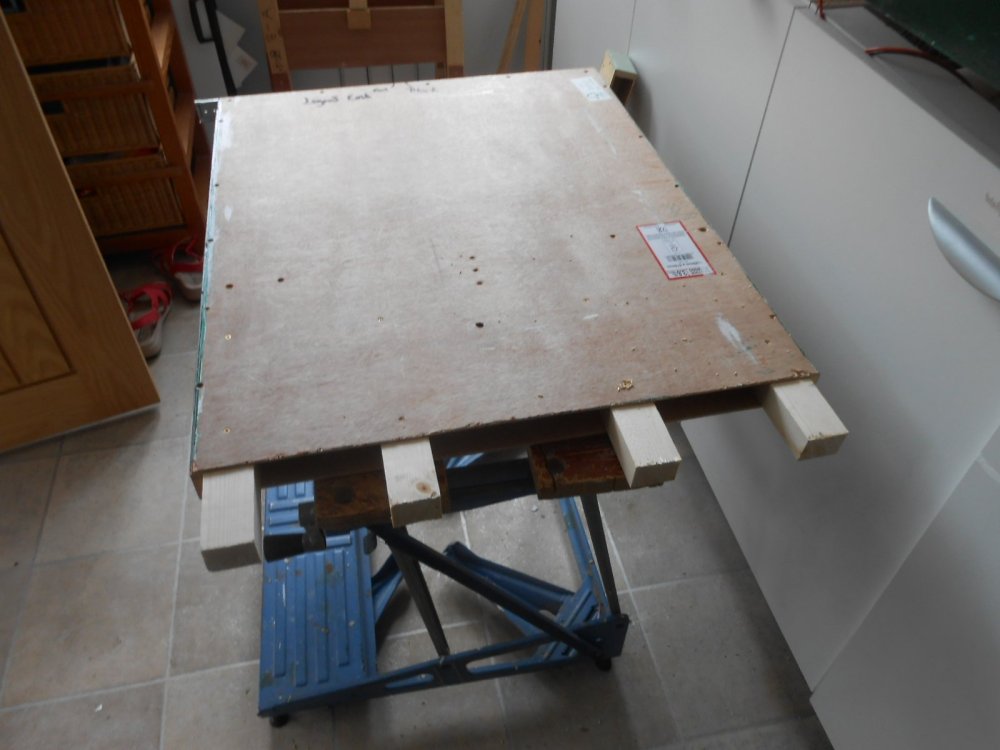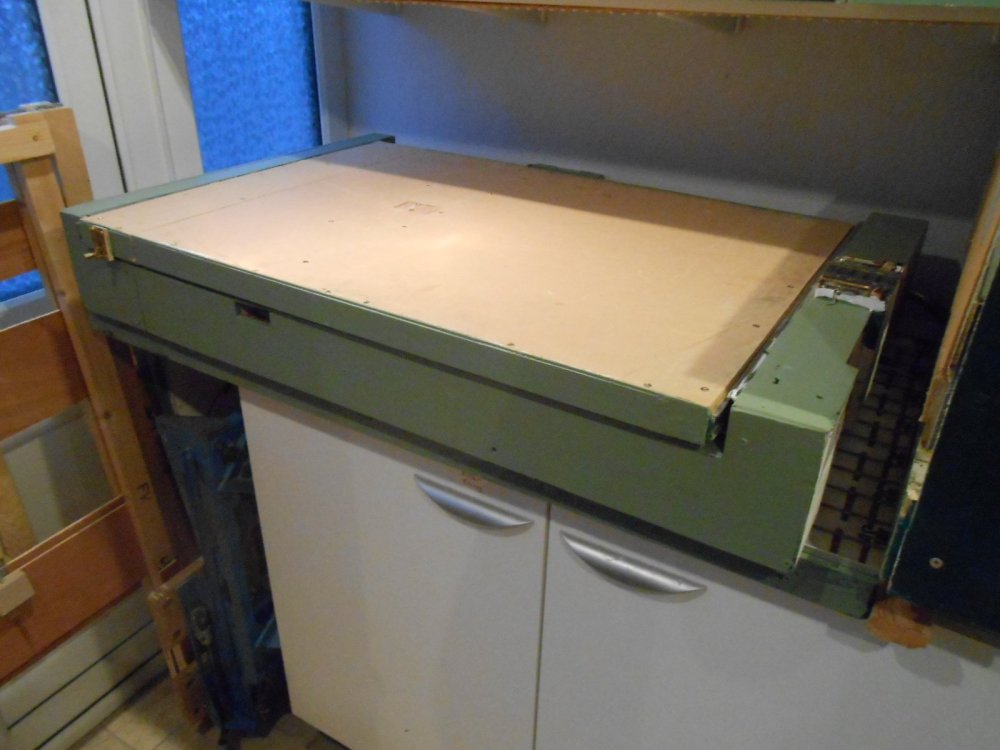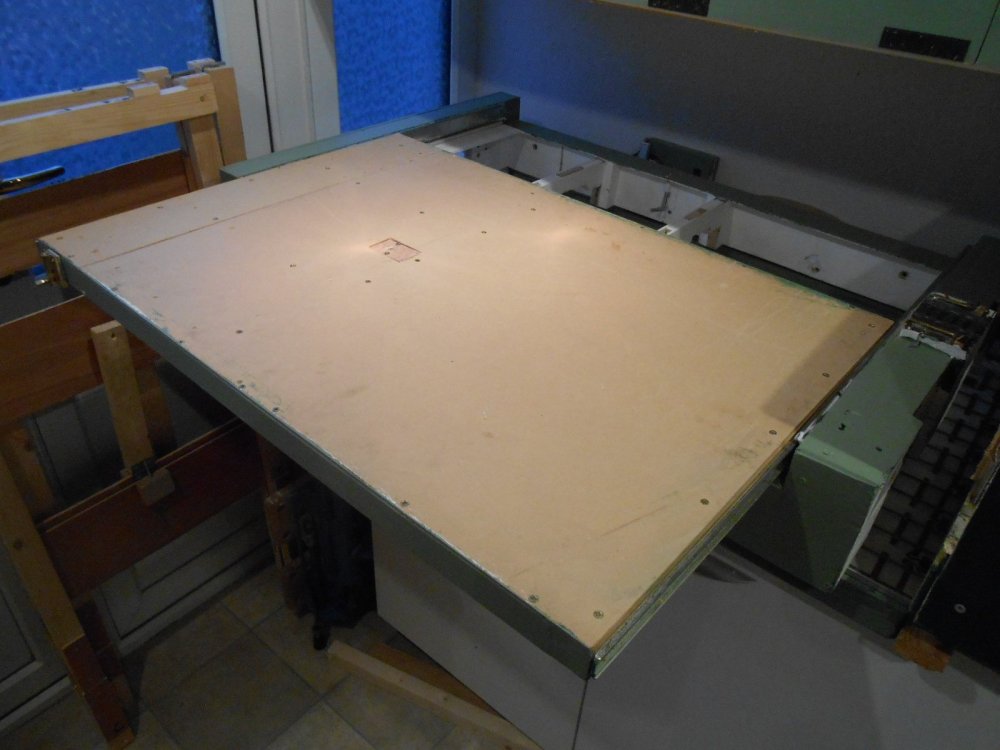
David Holman
Members-
Posts
4,359 -
Joined
-
Last visited
-
Days Won
117
Content Type
Profiles
Forums
Events
Gallery
Blogs
Store
Community Map
Everything posted by David Holman
-
Glasgow & South Western Railway Class 403 2-6-0
David Holman replied to David Holman's question in Questions & Answers
So, apart from the cab, tender, belpaire boiler, sand boxes, etc, almost the same!. Until I saw the article on the GSW 2-6-0, I thought the Irish Ks were pretty much unique, which was very naive of me given how railways developed over the years! -
Glasgow & South Western Railway Class 403 2-6-0
David Holman posted a question in Questions & Answers
Came across this in the latest Gauge 0 Guild Magazine - a new kit being developed by Taff Vale models and the G&SWR Society. The reason for this posting is that it appears to be similar to the Irish inside cylinder 2-6-0s. How similar, I have no idea, but thought it might be on interest to some of our learned brethren. Designed by Peter Drummond and introduced in 1915 and mainly used on freight traffic, they wandered all over Scotland & also ventured on to the Settle & Carlisle line. A superheated version of the 279 class 0-6-0s, the pony wheel was added to cope with the extra weight. The last one was scrapped in 1947. No idea whether there are any dimensional similarities & suspect there is little chance of the kit converting into one of the Irish 2-6-0s, but thought in interesting enough to share here. Comments welcome! -
Things remain far from ideal with the shuttle unit I bought for my crane. I returned it to the maker, with explanation of the problem & it came back a few days later, with my note, but no explanation. Reconnecting it to the [isolated] crane track, things clearly still weren't right, although after doing a 'factory reset', things did start to work. However, in fine tuning the shuttle to my short length of track, it suddenly stopped working again, with the same problem - just 0.5 volts output, which of course is no use whatsoever. Maybe it is me, but the instructions have been carefully followed and, on a one metre piece of straight track, unconnected to the rest of the layout & with its own, separate 12v feed it is fair to say I am disappointed... Have given the shuttle unit to our club electronics guru, who knows plenty about these things, so will await his findings. At the moment, I'm not inclined to mess about with it & the crane may well revert to manual control. Meanwhile, and completely separate from the issues with the shuttle unit, I discovered that the axles I'd used on the crane were not giving the correct 34mm back to back. I think they were from some wheels I got from the late Richard Chown's estate. Not sure why the B2Bs are about a millimetre too wide, but in trying to replace them, came close to knackering the High Level gearbox - causing the gears to bind when the multistage box flexes in one direction. Think I've managed to fix it by glueing two small squares of plasticard to the underside of the frame, in effect stopping it from flexing, but then found the gearbox was dragging along the ground. Not good... My solution has been to replace the Lomac wheels with ones of a larger diameter and, for now, all seems well and the crane runs with its wheels on the rails, not its flanges! You might also see that that I've added a piece of wire, which bears on the unpowered axle, giving simple three point compensation & [much] improved pick up and smoother running.
- 242 replies
-
- 12
-

-

-
Thanks Adrian!
-
Uckfield - 20th and 21st October, Leslie. I believe you may have some 36.75mm gauge items and visiting stock, which lets face it is pretty rare, will always be welcome.
-
Love the IoM railways, but less than two hours from Calais is the Baie de la Somme Railway. Spent a couple of days down there recently & it certainly seems to be thriving. Three trains in action, two steam, one diesel with the steamers in charge of no less than nine, fully loaded bogie coaches, doing six trips each day. The line is metre gauge. The first loco is an 0-6-2T, the other is a 2-6-0T Very well cared for too, as these pictures show.
-
Back to testing on NPQ - or in other words, playing trains. And why not, though it is a very important part of getting a layout ready for exhibiting. By and large, things are working well, though the Alex Jackson couplings still need practice. I've been concentrating on the early 1900s trains & have found a few changes have been needed. Losing the right hand [pier] fiddle yard has meant cutting down the GSWR goods. The train itself remains three wagons and a brake, but instead of swapping these for three different ones from the pier, instead, just a single van is dropped off/picked up in the right hand siding. My F6 2-4-2T [Alphagraphix kit] replaces the 101 0-6-0, because the latter doesn't like shunting into that siding and so is now with the two coach passenger. The photos show the moves involved - after arriving, the loco uncouples, runs into the headshunt, runs round and picks up the brake and rear van from the train. The van goes in the siding and the brake in the headshunt. After, the loco runs round again, pushing the remaining two wagons back to the brake, ready for departure. All uncoupling is remote and is about 90% successful at the moment - so still a bit of work to do. Losing the right hand fiddle yard has meant there were several nice wagons going spare, so have made up a 'horse special' comprising WLW and MGW horse boxes sandwiched between Dublin & Meath and WLW brake vans. Sligo Leitrim 0-6-4T 'Fermanagh' will haul this train, though at the moment several couplings need changing for it to work.
- 242 replies
-
- 21
-

-

-

-
Stranorlar County Donegal Railway Station and Yard
David Holman replied to Colin R's question in Questions & Answers
And, as others have said, quite a few years out too... -
They look pretty good to me. Presume the last picture is of an Alphagraphix-Tyconnel 'Argadeen' 2-6-0T - really pretty little engine. If you don't fancy tinkering with the plunger pick up, it might be worth replacing them with wire. 0.5mm works fine.
-
Looks like witchcraft to me...
-
Stranorlar County Donegal Railway Station and Yard
David Holman replied to Colin R's question in Questions & Answers
Oops! -
Stranorlar County Donegal Railway Station and Yard
David Holman replied to Colin R's question in Questions & Answers
A former member of the Chatham Model Railway Club was in the Royal Engineers and during the troubles found himself posted to Stranolar for a while. Back in the day, he did us a slide show, with some taken simply by holding his camera above the defences and hoping it didn't get shot at. He also went to Falkland to do reconstruction work after that war, so we got pictures from there too and even the whaling station railway on South Georgia. Seem to remember there were more penguins than trains though! -
Whisper it quietly, but a joint line from Letterkenny to Ramelton is very much part of my plan to do a makeover of Fintonagh. I believe Ramelton was on the alternative route to Burtonport, so not that implausible. Much of my Clogher Valley stock could find a home, with the Railcar, Unit and Phoenix going to the Donegal, along with a fair few wagons. The Swilly took some wagons as well. Whether they would have taken on the steam trams and balcony coaches is debatable, as they were pretty worn out by the time the CVR closed, but who knows? What I am hoping to do is build a couple of the smaller Donegal railcars and a Swilly 4-6-0T and 4-6-2T, plus some coaches and wagons. That way, Ramelton could be served by both companies.
-
Shades of Roland Emmet, methinks. And none the worse for it.
-
Hope the unpacking doesn't take too long, so you can start getting creative again!
-
Another itch to scratch - love the GSWR lined green...
-
Much ado about mundane stuff lately, with electrics to the fore. Sadly, the shuttle unit hasn't performed & am awaiting a replacement. Am as sure as I can be that I installed it correctly, but for some reason there was no power going to the track - or at least my multimeter was showing just 0.4volts on the output terminals of the unit. Tried all the trouble shooting options, while in using my old H&M Clipper, the crane and several other locos could all run up and down the isolated section of track, so must assume the problem lies with the unit itself. All a bit frustrating, especially as I'd taken the trouble to wire in an on/off switch [DPDT slider], so that, once set up, the shuttle unit can work the mobile crane while a new train is set up from the fiddle yard. You can see the slide switch in the photo above, which also shows an extra push to make switch for a fourth uncoupling magnet. This is sited on the left baseboard & enables wagons to be uncoupled from the rear of an incoming train and shunted to the right hand siding. Looks like a bit of tidying up needs doing to the paintwork around the control panel! The four red buttons are for the electro magnet uncouplers, while the two toggle switches operate the crossover points at each end of the loop. Top left is a push-pull 'button' which works the starter signal [by wire and cranks], while there is also the socket for the controller and the afore mentioned slide switch. The whole panel is just 15cm x 4cm by the way. The reason for the electrics is to get on and do some more test running, especially as I've decided that common sense must prevail when it comes to exhibiting NPQ. In Belmullet's one and only show at Uckfield three years ago, I wanted to display as much of my stock as possible. However, 7mm stock takes up a lot of space & I've resolved to keep things simpler from now on. Trains are shorter on NPQ too and though it would be nice in some ways to have a range of shunting moves, Fintonagh has taught me that a limited range of moves will keep visitors happy, so long as everything runs smoothly. Hence, alternate trains will be little more that 'out and back', with the loco just running round. Hopefully, with hands free remote uncoupling and the crane shuttling back and forth between moves, this should be enough to maintain interest for both operators and observers, while there is certainly variety in the trains themselves, with at least 14 different options available, over the 1900s and 1950s periods. A small, but important key to the Alex Jackson couplings working well seems to be a U shaped piece of wire, acting as a 'limiter', when the magnet pulls down on the actuating wire. Without this limiter, the actuating wire is libel to catch on the magnet, so requires some careful adjustment - hence more testing... Meanwhile, the Acla is now firmly screwed to the baseboard and the right hand crane is likewise fixed in place - meaning two substantial boxes are no longer required for transport, and likewise two things less to set up and put away come show time. Believe me - every little thing counts when it comes to minimising work on the day.
- 242 replies
-
- 15
-

-
Nice, very nice - though if it keeps on raining, we may yet need to seek out a good source of gopher wood...
-
And THAT viaduct of course. Not many could manage such a challenge apart from Richard.
-
Am still convinced the Jinties were clockwork - you can see the keyhole Ok, it is a sandbox filler... while the Agenora kit looks to have a lot more detail. Would cost a lot more though.
-
Another jewel in the making.
-
So, to the fiddle yard. I built it around ten years ago. The frame is ply and softwood sandwich type - two pieces of 4mm ply either side of 12mm softwood blocks. Very robust, but at around four feet long, it is rather heavy, especially when it had integral legs attached. The train table detaches for transport - just as well, for as it is made of 12mm mdf, that would add even more! It is however, based on a really clever idea [not mine, by the way], as within the main frames is a section that slides from side to side. The track table sits on top of this and when the sliding section is pulled right out, the former can be rotated, which means that there is zero handling of trains and stock. The train table is 42" long and has seven broad gauge tracks in its 24" width. Compare that to just four narrow gauge tracks on Fintonagh's fiddle yard turntable. The idea is that NPQ's fiddle yard is shortened to 39" [one metre], meaning it will fit across the boot of my car. Later, a narrow gauge track table will be built, so it can be used with Fintonagh, when that eventually goes out again. So, what to do? Starting with the main frames, apart from their weight and length, they are also much deeper than NPQ's baseboards. However, by cutting out sections of the ends and cross beams, I am now able to slot the board over the two longitudinal beams that sit on the trestles. Chopping out 17cm of length seemed a bit drastic at first, until I realised that if I made two cuts, either side of one of softwood centre pieces, I could then join the fames together again with a new centre piece, in this case made of 12mm ply. Glued and screwed in place, the frames are every bit as robust as they were before. The sliding table had been removed to do this, simply by removing two screws from each end. The table itself is hollow, with 32mm square softwood ends [and one cross piece] and 32x12mm sides. A 4mm ply sheet makes the base, with a sheet of hardboard for the top. To shorten it, I cut out a 17cm section from one end and then used 32mm square wood slotted inside to fix the two sections back together. So far, so good. However, when I tried the rebuilt fiddle yard on the support beams and trestles, I found that when I slid the table out to one side, the weight on the track table caused the whole thing to tip over. Not good - especially as this was without the weight of seven trains as well... After muttering a few words like 'bother' and 'oh dear', on went the thinking cap & I decided the best option was to bolt the fiddle yard frame to the beams, with 100mm M6 bolts and wing nuts. This seems to work ok, though for extra security, I may also bolt the beams to the trestles. A bit of extra work when setting up, but better than seven trains of hand made stock landing on the floor... The final picture of of a new toy, namely an automatic shuttle unit to power the mobile crane on the quayside. Hopefully will be able to report on that soon.
- 242 replies
-
- 12
-

-

-
Yes and in the Dockyard too. One year from now on 20th and 21st July. Back in the No5 Covered Slip. All down to some new and enthusiastic members, while mainly model railway based, it will also include other themes like radio control, model ships and aircraft. Will aim to post updates as details are confirmed, but we already have lots of interest from traders, clubs and societies.
-
It was a nice day at the show on Saturday, though the less said about the weather on the drive home the better! Fintonagh proved to be its usual reliable self, though I did have to fix a broken wire on Friday. The only issue was three wagons needing new knuckle springs on their Kadee couplers, though I also had to fend off several requests for further shows, but even before its debut in October, Northport Quay is also getting invites and I can' do both... Looking back through my journals [I've always kept an informal diary of my modelling activities], Fintonagh has done 23 shows in five years [two of those limited by Covid], covering just under 5000 miles in the process. The longest trip was Cultra last November - a 1000 mile round trip, but Fintonagh has also been south to the likes of Bexhill and Eastleigh, west to Nailsea and north to Birmingham and Burton. Once NPQ has settled down, the aim is to build more Swilly and Donegal stock, then give Fintonagh a small make over and tidy up, so hopefully there will be plenty more outings in the future.
- 266 replies
-
- 12
-

-
Lovely picture and interesting to see how chunky the diesel is alongside 29. 're dcc, I hope things have changed since my own experiences of flirting with the Dark Side. More than a little care was needed 10 years ago, when fitting chips inside metal bodied locos. Indeed, with the Chatham Club's 0 gauge oval now running again, post Covid, found that the chips on several of my locos were kaput. Now converted back to DC and probably just as well I only used basic, one amp chips (Mashima motors only draw 0.25-0.5 amps), or it would have been multiple hundreds of squids down the pan...
.png.c363cdf5c3fb7955cd92a55eb6dbbae0.png)

